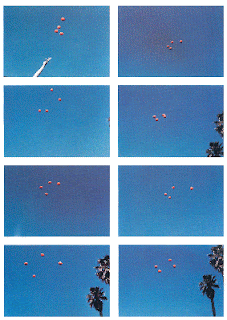Artist References from Session 3
American artist, Solomon ‘Sol’ LeWitt, is regarded as one of the founders of conceptual art and minimalism. His practice encompassed drawing, printmaking, photography and painting but he is most famous for his wall drawings and ‘structures’, (he preferred this term to ‘sculptures’). He was interested in repeated patterns and their different possible variations, working with simple shapes and colours under self-imposed restrictions. For his wall drawings, LeWitt formulated simple guidelines or diagrams that instructed other artists in their execution, thus challenging the nature of art by removing the emphasis on who made it or how it was made.
LeWitt’s work focuses on the multitude of possibilities that can arise from a basic idea. The translation of his straightforward instructions into a variety of complex structures reflects the many different ways in which we understand and interpret language. His work also demonstrates an alternative use of text in art, in comparison to last week’s ‘placard artists'.
John Baldessari
John Baldessari is an American conceptual artist known for his humorous works featuring found photographs and collaged images. He started off as a painter but burned all of his early, more conventional artworks in favour of developing a new artistic style of working in which the idea alone, rather than the visual effect of the artwork, would take priority. In the conceptual (ideas-based) explorations that followed, Baldessari often used a systematic framework of rules that would determine the production of the artwork. These frameworks were closely linked with his interest in language and narrative (an account of connected events, like a story).
Baldessari has compared language to the structure of games, as both are based on arbitrary and compulsory systems of rules. Based on this, many of his works show a series of attempts at achieving a random goal, such as 'Throwing four balls in the air to get a square (best of 36 tries)'.
The simple system of rules that we have introduced when playing Dodgeball, Word Association or placard painting all echo similarities with Baldessari’s approach. Setting specified limitations or questions has explored the different ways in which art can be defined and produced and has already yielded surprising results in the diversity of outcomes that these have prompted.
Roman Ondák
Roman Ondák is a contemporary Slovakian artist best known for his interactive, conceptual artworks. In many of his installations, the gallery visitor creates the work as he/she follows certain instructions such as marking their height on the gallery wall or bringing their young children along and teaching them to take their first steps. With simple initial ideas, Ondák adopts the role of theatre director and guides the audience in becoming both viewers and performers.
In the sound/performance element of the workshop, the simple written commands provide the theatrical direction that is open to interpretation by the different individuals taking part.






